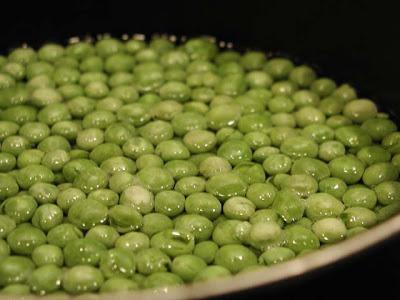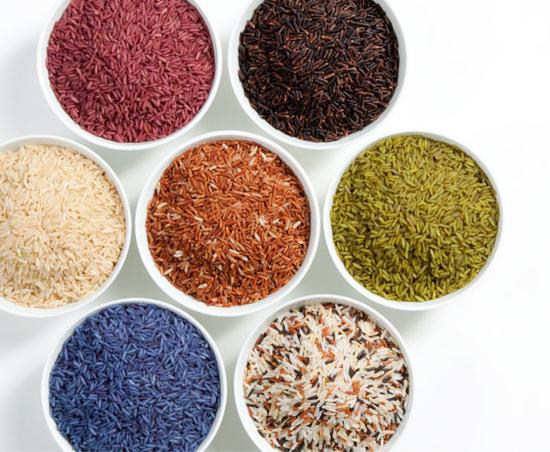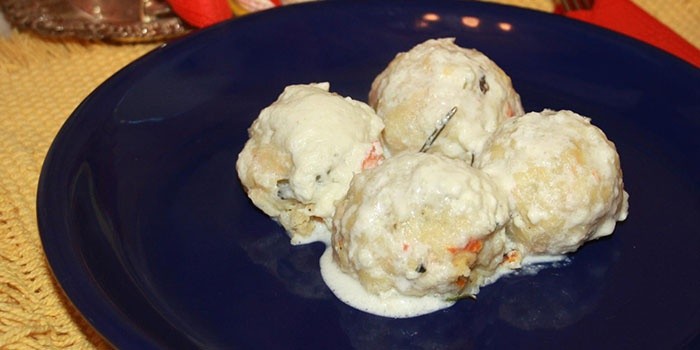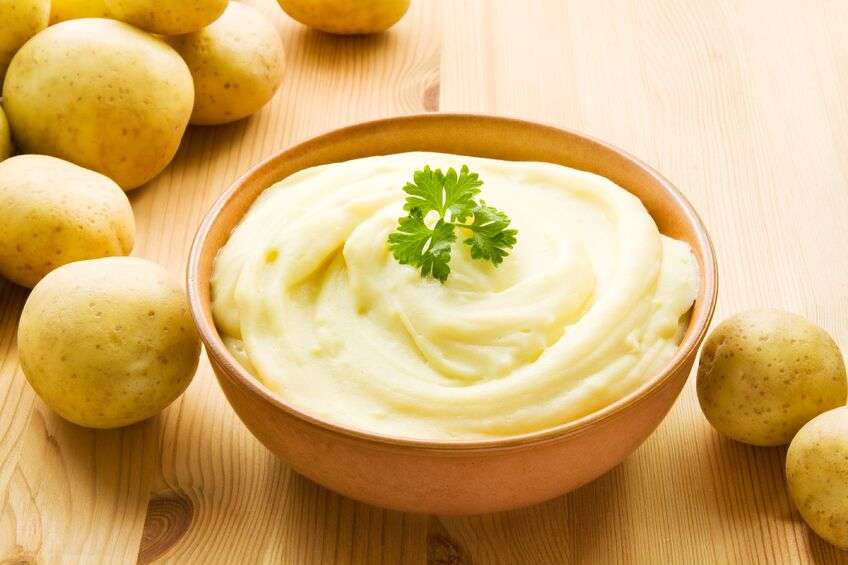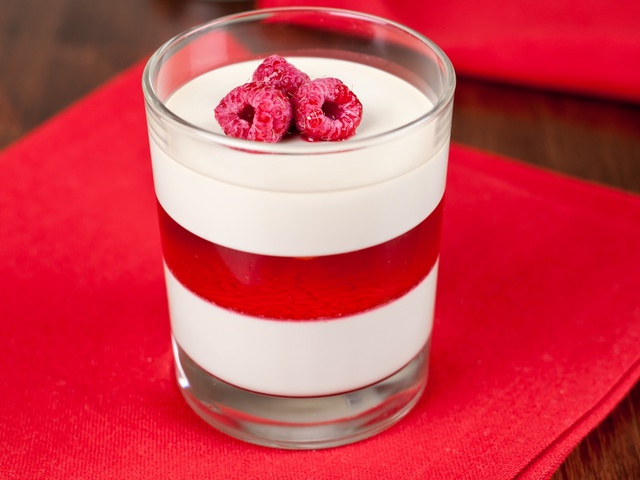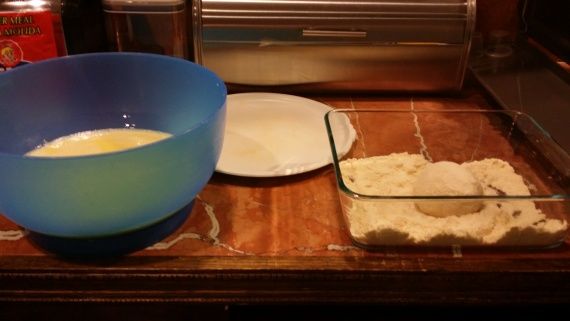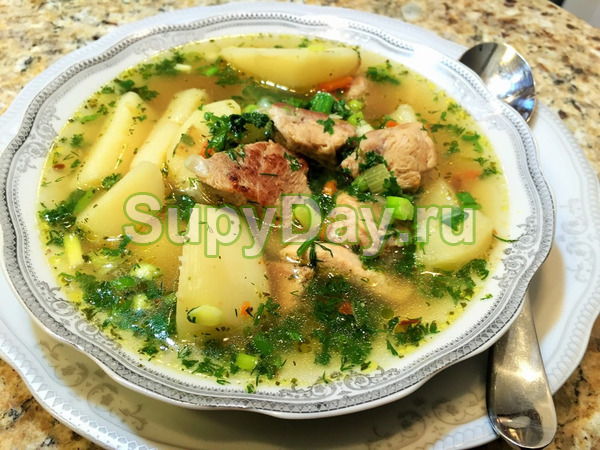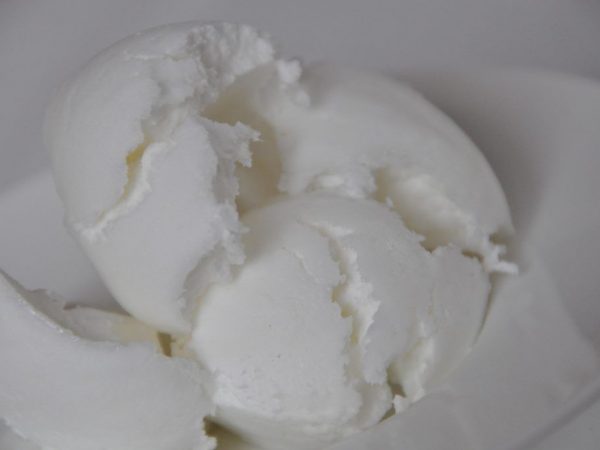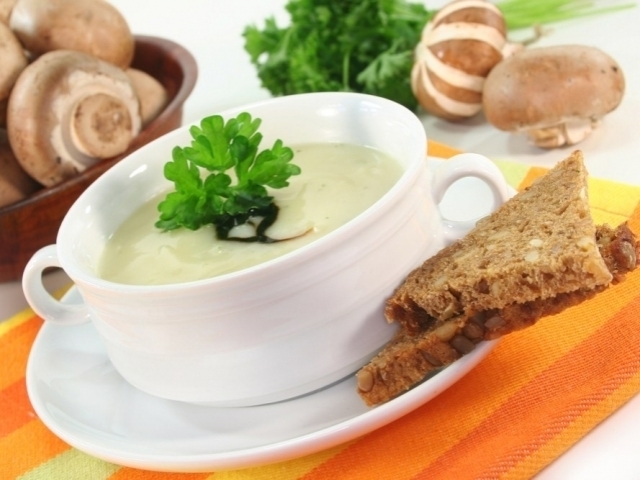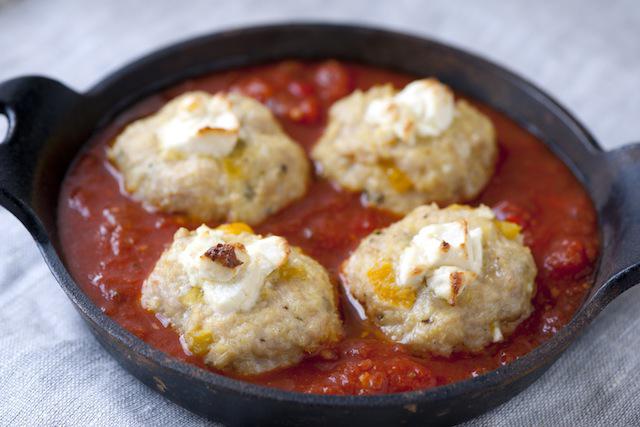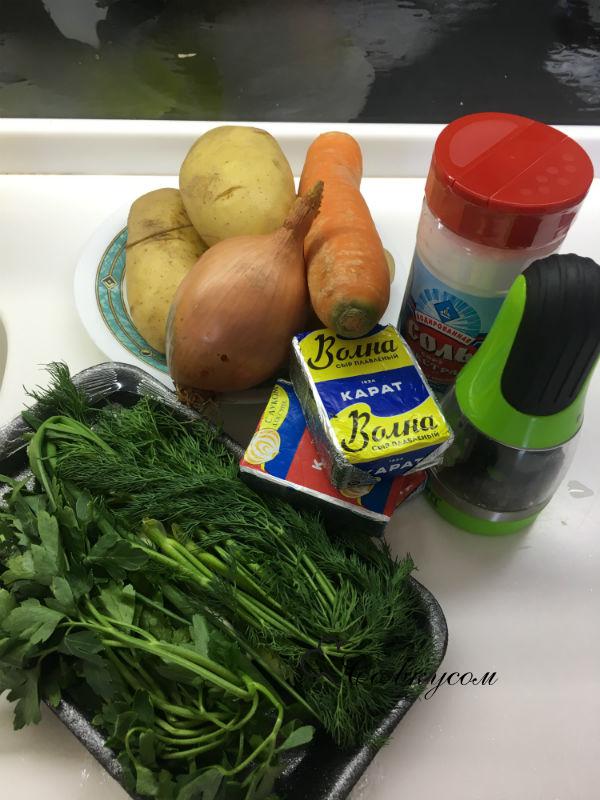Unusual exotic fruit mangosteen. The benefits and harms of mangosteen, methods of its use
Mangosteen is also known in narrow circles as the purple mangosteen. This tropical evergreen tree first appeared, according to many scientists, in the Sunda Islands and the Moluccas of Indonesia. It grows now mainly in Southeast Asia, as well as in the tropical countries of South America: Colombia, in the state of Kerala in India, in Puerto Rico and Hawaii, where the tree was imported. It can reach 25 meters in height, although there are relatively small trees, for example, 6 meters high. Unusual exotic fruit mangosteen is very sweet and spicy, its flesh is juicy and slightly fibrous with vesicle liquid (as in citrus fruits). The inedible peel of the fetus has a red-violet hue during the ripening period. Fruit seeds are almond-shaped and small in size. Purple mangosteen belongs to the same species as other, but less well-known mangosteen, such as the button mangosteen or mangosteen madruno. Growing it at home requires a reverent approach to choosing a place of growth and compliance with the rules of care. The article tells about how to eat fruit and in what variations it can be used. In the meantime, look at the mangosteen fruit in a photo illustrating the external attractiveness of a powerful plant: 

Get to know a tropical stranger in the photo
As we said earlier, the homeland of mangosteen is the Sunda Islands and the islands of Indonesia. Since ancient times, the tree has been bred in the Philippines, Java, Sumatra and mainland Southeast Asia. The tree and its fruit are highly regarded in the market for their delicate texture and slightly sweet-sour taste. Let's get to know this tropical stranger better. Look at the mangosteen in the photo, it allows you to imagine yourself this is an unusual fruit:
 The description of mangosteen was first included in Linnaeus' book “Species Plantarum” in 1753. In Russia, the tree was first grown in a greenhouse in 1855. Subsequently, the culture of this tree was introduced in the Western Hemisphere, where it established itself in the West Indies, especially in Jamaica. Later, culture established itself on the continents of America, and later in Guatemala, Honduras, Panama and Ecuador. A tree never grows far from the tropics. Due to the long fruiting period and the long-term result of the selection of cycles, mangosteen is not recognized as the best option for studies that can increase the productivity of the tree.
The description of mangosteen was first included in Linnaeus' book “Species Plantarum” in 1753. In Russia, the tree was first grown in a greenhouse in 1855. Subsequently, the culture of this tree was introduced in the Western Hemisphere, where it established itself in the West Indies, especially in Jamaica. Later, culture established itself on the continents of America, and later in Guatemala, Honduras, Panama and Ecuador. A tree never grows far from the tropics. Due to the long fruiting period and the long-term result of the selection of cycles, mangosteen is not recognized as the best option for studies that can increase the productivity of the tree. 


Propagation and cultivation of mangosteen at home
Mangosteen is often propagated using seedlings. The vegetative propagation method is difficult, unlike the first method. Seedlings are not only a reliable method, but they bear fruit earlier than plants propagated by the vegetative method. The plant produces recalcified seeds - these are not seeds in the usual understanding of botany, but like an egg of an asexual embryo. Seed formation does not imply any fertilization, therefore, the seedling is genetically identical to the mother plant. If the plant dries, then the seeds die very quickly. But if the seeds are wet during propagation, then after 2-3 weeks the seeds will begin to germinate. After that, the plant can be kept in a pot nursery for 2-3 years. Growing mangosteen at home requires a lot of experience and tremendous knowledge from the grower. As soon as the tree reaches 25-30 centimeters, they are transplanted into the garden or other open space at a distance of 20-40 centimeters from each other. Transplanting is always done during the rainy season, as young trees need shade - most effective are coconut and banana trees, rambutan and durian. Another advantage of growing other crops near the mangosteen is that they suppress weeds. The mangosteen fruit initially appears in the form of a pale green or almost white product. Over time, the fetus increases - it takes about 3-4 months, and the color deepens to dark green. During this period, the fruit grows in size until its size is 6-8 centimeters in diameter from the outside to the final ripening stage. Tree-plant growth slows down if the room temperature drops below 20 degrees Celsius. The ideal temperature range for it is from 25 to 30 degrees, with an air humidity of 80% - 38-40 degrees. The lowest possible temperature is 3-5 degrees. and young and adult trees tolerate shade well. Mangosteen trees have a weak root system and prefer deep, well-drained soil with a high moisture content, which is why in the natural environment they grow near large and not very rivers. The plant is not intended for calcareous soils with a low content of organic substances. A tree needs a climate with a good distribution of rainfall throughout the year (< 40 мм/месяц) и 3-5 недель сухого сезона. Оно чувствительно к водообеспеченности и применению удобрения, количество которого увеличивается с возрастом дерева (вне зависимости региона нахождения). В первые пять лет после прорастания мангостин очень чувствителен к засухе, поэтому ему необходим корневой запас, в том числе и для лучшего развития в первые годы роста. Постоянная форма кроны дерева – это пирамида.
Tree-plant growth slows down if the room temperature drops below 20 degrees Celsius. The ideal temperature range for it is from 25 to 30 degrees, with an air humidity of 80% - 38-40 degrees. The lowest possible temperature is 3-5 degrees. and young and adult trees tolerate shade well. Mangosteen trees have a weak root system and prefer deep, well-drained soil with a high moisture content, which is why in the natural environment they grow near large and not very rivers. The plant is not intended for calcareous soils with a low content of organic substances. A tree needs a climate with a good distribution of rainfall throughout the year (< 40 мм/месяц) и 3-5 недель сухого сезона. Оно чувствительно к водообеспеченности и применению удобрения, количество которого увеличивается с возрастом дерева (вне зависимости региона нахождения). В первые пять лет после прорастания мангостин очень чувствителен к засухе, поэтому ему необходим корневой запас, в том числе и для лучшего развития в первые годы роста. Постоянная форма кроны дерева – это пирамида.

 Mangosteen seeds lose their germination very quickly, so at home it is necessary to prepare them for planting after 4-5 weeks, after the fruit was removed from the tree. The following method slightly increases the term of seed productivity: you need to wrap them in moist moss or fiber. Before planting in a pot, carefully prepare the drainage and soil mixture with peat. Seeds are placed to a depth of two centimeters and slightly moistened, after which the container is closed with a film. Seeds are best planted previously in special boxes for seedlings, and only then placed in pots. After that, they can already be planted in a permanent container. Be prepared for the fact that the first shoots appear only after 1-1.5 months. Mangosteen is a slowly growing tree, so it will reach its height of 25-30 centimeters only after 2 years, no less. The fruits will appear only after 10 years. The soil should not be wet, but it should almost always remain moist; water the plant often - but not abundantly. The plant dies at temperatures below 4 degrees and above 37.
Mangosteen seeds lose their germination very quickly, so at home it is necessary to prepare them for planting after 4-5 weeks, after the fruit was removed from the tree. The following method slightly increases the term of seed productivity: you need to wrap them in moist moss or fiber. Before planting in a pot, carefully prepare the drainage and soil mixture with peat. Seeds are placed to a depth of two centimeters and slightly moistened, after which the container is closed with a film. Seeds are best planted previously in special boxes for seedlings, and only then placed in pots. After that, they can already be planted in a permanent container. Be prepared for the fact that the first shoots appear only after 1-1.5 months. Mangosteen is a slowly growing tree, so it will reach its height of 25-30 centimeters only after 2 years, no less. The fruits will appear only after 10 years. The soil should not be wet, but it should almost always remain moist; water the plant often - but not abundantly. The plant dies at temperatures below 4 degrees and above 37. 

Fruit mangosteen - how to eat and use it
Ripening of fruits on a tree takes at least 5-6 months, after which they turn purple. The quality of the fruit, including its bitter taste, is due to changes in the pulp or around the fruit tree (it can crack as a result of excessive absorption of water). The mangosteen tree first bears fruit for 5-6 years, but it happens after only 8-10 years. Its productivity depends on the climate and age of the tree. If the young tree is planted for the first time, then the probable productivity is 200-300 fruits, while at the end of the term - 500 fruits per season on average. Mature trees, aged 35 to 40 years, can produce up to 3 thousand fruits. Even old trees, which are already more than a hundred years old, still maintain their yields at a high level.

 The main amount of mangosteen is produced on the territory of Southeast Asia, mainly in Thailand as the country with the largest sown fields: 4 thousand hectares in 1965 and 11 thousand hectares in 2000, which in total gives a profitability of 46 thousand tons. Indonesia, Malaysia and the Philippines are other major producers. As we have already said, the peel of mangosteen is inedible, in contrast to the pulp, which is also divided into 4-8 slices. Fruit can be eaten both fresh and canned. How mangosteen is eaten depends on the use of the pulp. You need to select only those fruits that are missed when pressed. Otherwise, you risk consuming an already spoiled product. First of all, the fruit needs to be peeled - remove the green top and click on the middle, after which the fruit is easily opened into two parts. After that, eating it is very convenient and pleasant. Mostly fruit is consumed fresh - squeezed juice, used as an ingredient in salads, milkshakes, soufflé and toppings for pies and cakes, it is used even in fish sauce. By the way, the refined sweet and sour taste of mangosteen is harmoniously combined with seafood, especially shrimp and squid. To achieve the original taste of yogurt, ice cream or kefir, you just need to cut the fruit into pieces and add to the product.
The main amount of mangosteen is produced on the territory of Southeast Asia, mainly in Thailand as the country with the largest sown fields: 4 thousand hectares in 1965 and 11 thousand hectares in 2000, which in total gives a profitability of 46 thousand tons. Indonesia, Malaysia and the Philippines are other major producers. As we have already said, the peel of mangosteen is inedible, in contrast to the pulp, which is also divided into 4-8 slices. Fruit can be eaten both fresh and canned. How mangosteen is eaten depends on the use of the pulp. You need to select only those fruits that are missed when pressed. Otherwise, you risk consuming an already spoiled product. First of all, the fruit needs to be peeled - remove the green top and click on the middle, after which the fruit is easily opened into two parts. After that, eating it is very convenient and pleasant. Mostly fruit is consumed fresh - squeezed juice, used as an ingredient in salads, milkshakes, soufflé and toppings for pies and cakes, it is used even in fish sauce. By the way, the refined sweet and sour taste of mangosteen is harmoniously combined with seafood, especially shrimp and squid. To achieve the original taste of yogurt, ice cream or kefir, you just need to cut the fruit into pieces and add to the product. Mangosteen (mangosteen, garcinia) is an exotic fruit of the Kluziev family. Due to its medicinal properties, the dietary product is widely used in traditional medicine of Asian countries. It contains vitamins, micro and macro elements useful for human health.
Nutritional value and beneficial properties of mangosteen
Exotic fruit is a hybrid (polyploid) of two types of trees, the connection of which occurred without human intervention. Due to this feature, the content of beneficial trace elements and vitamins is greater than in ordinary fruits. Useful properties of fruits:
- 100 g of fruit contains only 65 kcal, but nourishes the body with carbohydrates, proteins and fats;
- fruits are rich in fiber and sugar derivatives (glucose, fructose, sucrose);
- mangosteen contains a large amount of ascorbic acid, vitamin E and B1 (thiamine);
- mineral content (phosphorus, calcium, potassium, iron);
- fruits are valued for natural antioxidants (xanthones). Of the 200 known to modern scientists, mangosteen has 39. These substances support the work of the heart and blood vessels, as well as tone the body, improve protein metabolism, help fight viral infections and stimulate brain activity;
- patients suffering from allergic reactions, it is recommended to use mashed fruit;
- the fruit eaten after eating regulates body weight by controlling blood sugar levels;

- mangosteen helps to restore the digestive tract, normalizing digestion;
- due to its powerful antioxidant effect, the miracle fruit has a beneficial effect on the epidermal cells;
- unbelievably, mangosteen helps to defeat Parkinson’s disease, Alzheimer's, fights cancer cells, leukemia, eczema and gum disease;
- the properties of the healing fruit can slow down the aging of cells and prevent the appearance of malignant tumors.
Since xanthones have not yet been fully investigated, experts do not recommend combining the use of mangosteen fruit with taking heart preparations, and also with caution in treating them with women carrying a child.
In an exotic tree, not only fruits are useful, from pulp to peel, but also leaves with bark. For example, the skin contains a large number of flavonoids that effectively fight dysentery and skin ailments. Since the peel is inedible, it is used in the preparation of juices from pulp.
Useful properties of mangosteen (video)
Where and how does an exotic fruit grow?
Mangosteen is an evergreen tree reaching a height of 25 m, which gives a fruit crop of up to 180 kg. The plant has a scaly trunk covered with black-brown bark, leathery shiny oval-oblong leaves and a pyramidal crown. The size of the ripened fruit does not exceed the size of the mandarin, and the appearance is similar to pomegranate. The white pulp, divided into 8 segments, is covered with a thick purple peel. Inside the pulp are seeds.
Southeast Asia is considered the birthplace of the miracle tree. although the exact place of origin is not defined. The world leader in fruit exports is Thailand. Also mangosteen trees are successfully grown in Vietnam, Malaysia, India. In countries with a tropical climate, the plant is found in botanical parks. The most suitable for cultivation is the equatorial climate without drafts and droughts.

How to clean and eat mangosteen
Mangosteen has a sweet taste with a slight acidity, reminiscent of an amazing cream of strawberries, peach, apple and sweet grapes at the same time. In order to choose ripe fruit on the counter in the store, The following recommendations should be followed:
- the color of the fetus should be burgundy;
- since the thickness of the peel does not depend on the size of the fruit, it should not be too small;
- if the fruit is not overripe, it will be firm to the touch, not soft.
Before eating the fruit, it must be cleaned and done correctly. The cleaning process begins with two shallow cuts (without affecting the tender flesh) from the cuttings along the lower part of the fruit, done crosswise with each other. Then the peel should be broken. On the surface there will be a white pulp, consisting of 4-8 slices (like a mandarin) with attached seeds that are tightly adjacent to each other.

Use of beneficial mangosteen
Mangosteen has an exquisite taste and a lot of nutritional properties. Although only pulp is considered edible, more beneficial substances are found in the peel. For this reason, for the preparation of mangosteen juice, pulp is used along with the peel.
The study of the fruits struck specialists with a wide possibility of their application. Due to the content of antioxidants, rare vitamins B1, B2, C, E, trace elements, as well as the presence of anti-inflammatory, antiviral and antifungal properties, mangosteen has found application not only in medicine but also in cosmetology.
How to eat a mangosteen (video)
Juice and drink
Most people prefer to eat fresh fruits, but in recent years, producers are increasingly processing fruits into canned goods or into juice. Thanks to modern technologies, vitamins, micro and macro elements, active substances and unique components are maximally preserved in the product.
There are many more valuable properties of a unique product that are not listed. Due to the ability to break down body fat and improve metabolic processes, the most common mangosteen in the form of juices and drinks is used to correct the figure.

Mangosteen oil
The oil of this fruit is used in aromatherapy as an antidepressant. Its main properties include a unique anti-aging effect. In addition, it prevents the loss of moisture and wrinkles.
To stimulate the metabolic processes of the epidermis, some manufacturers add coconut oil, jojoba oil and macadamia to the cosmetic product. The composition is applied to the decollete, face and neck 1 or 2 times a day and is not washed off. It is allowed to mix with cream.
Harm from eating fruit
Since mangosteen has a wide range of beneficial properties, it is very popular among those who care about their health. Eating this healthy fruit can be a limitation for allergy sufferers. That is why when you first try to enjoy mangosteen, it is recommended to start with a small piece. In the absence of irritation or redness on the skin, you can safely eat fruit.
With great care, you should eat fruits for people with pathology of the digestive tract, liver and kidneys. Pregnant women are allowed to eat mangosteen only if they tried the fruit before conception and did not observe allergic reactions.

We grow outlandish mangosteen at home
Since mangosteen is very demanding in care, it is difficult to grow it at home, especially from seed. It is recommended to purchase adnexal embryos. But it must be borne in mind that such tubers retain the ability to germinate within 6-7 weeks after packaging.
For landing, you need to follow a simple algorithm of actions:
- At the bottom of the container for planting an exotic plant, it is necessary to place drainage, and fill the soil with peat on top.
- Seed should be immersed to a depth of 2 cm, moistened and covered with a film, thus creating a warm, moist environment.
- Mangosteen has a very slow growth, so the first sprouts appear 1.5 months after planting, and in a couple of years the plant height will reach only 25 cm. In this case, the conditions should be equated to tropical ones: temperature 27-30 degrees and high humidity.
How to choose a mangosteen (video)
Due to the difficulties associated with the transportation and storage of the exotic product, it is almost impossible to acquire mangosteen. Ripe and healthy fruits are available in tropical countries throughout the summer.
Recently, a new drug has arrived on the dietary market - mangosteen concentrate. The manufacturer of the product claims that this biological supplement helps to lose weight quickly, and you do not need to torment yourself with physical activity or follow strict diets.
What is mangosteen
Exotic fruit grows in tropical countries, while the Malay archipelago is considered the birthplace of the fruit, and it was most widely spread in Thailand. Mangosteen is a sweet fruit with a dark purple hard peel, which has a fleshy, light, juicy pulp in the form of several slices (see photo below). Inside the fetus there are bones that are not eaten, but are sometimes used as a dietary supplement. The fruit is also called mangosteen or mangustin.
The benefits and harms of mangosteen
Mangosteen is a source of beneficial fibers, iron, calcium, cachetins, phosphorus and potassium. In addition, the fruit contains:
- vitamin D
- vitamin A;
- vitamin E
- vitamin C;
- b vitamins
The peel of mangosteen includes phytonutrients, pectins, anthocyanins and bioactive substances that can strengthen the immune system and have a generally positive effect on the human body. The dried product has found application in treating the skin, so the fruit is used against eczema, acne, etc. The beneficial properties of mangosteen are justified by the presence of antioxidants, anti-allergic, anti-inflammatory and antibacterial substances in the fruit juice. Mangosteen can be used as a prophylactic against viral and infectious diseases.
Mangosteen includes 60 types of natural phenolic compounds (xanthones), characterized by a wide range of beneficial properties. Due to this, the use of the fetus helps to eliminate toxins, free radicals and toxic compounds from the body. Fruit seeds are rich in plant nutrients and fatty acids, which positively affects the health of hair, nails, and skin. What other useful properties does mangosteen fruit have:
According to scientific data, the danger of the fruit lies in the fact that xanthones in its composition thin the blood, therefore, for those people who have coagulopathy or hemophilia, weight loss with the help of mangosteen is contraindicated. In addition, allergic reactions to mangosteen are common, so drinking juice or the fetus should begin gradually. There is no consensus among doctors regarding whether pregnant women can eat exotic fruit - it is better to ask your doctor about this.

Mangosteen Syrup for Weight Loss
Mangosteen juice is perfect not only for those who achieve weight loss, but also for professional athletes, since, eliminating fatty tissue, the product does not inhibit the growth of muscle fibers, and in addition, is a source of energy. Manufacturers are advised to drink syrup for weight loss, even to those who do not set a goal to lose kilograms, but just want to feel good. Mangosteen juice, according to them, helps to recover quickly after operations and serious illnesses.
Doctors' reviews about slimming mangosteen syrup
The benefits of mangosteen are scientifically proven: thanks to its phenolic compounds, the fruit has a positive effect on the immune system, metabolism, and other metabolic processes. The latter explains the ability of the fetus to help in losing weight, however, narrowly focused studies on the effect of mangosteen on the body of obese people have not been conducted.
Reviews of doctors about mangosteen syrup for weight loss indicate its effectiveness in the fight against excess body fat. Despite the fact that the extract from the fetus cannot be classified as super-effective means for losing weight, but it is also impossible to deny its positive effect on the body of full people. Manufacturers were able to maintain the benefits of fresh mangosteen and release a bioadditive in an easy-to-use form - this is a big plus.

Slimming mangosteen powder
You can take fruit for weight loss not only in the form of juice, but also in the form of powder from a mangosteen peel. It is prepared as follows: ripened fruits are dried in a vacuum way, then they are ground to a state of fine-grained powder, which ensures the preservation of the beneficial substances of the fetus. According to manufacturers, mangosteen powder for weight loss helps to normalize protein metabolism, accelerate metabolism and remove toxins from the body. It should be taken by mixing with water, tea or natural juice, while in the process of drinking it is necessary to stir the liquid, not allowing the powder to settle on the bottom.
How to take mangosteen for weight loss
Syrup for weight loss should be taken every day before meals, while a single dosage is ½ tsp. Optionally, you can add mangosteen juice to water, dairy products or non-hot tea. The manufacturer advises when you feel hungry (when the main meal is still far away), drink another 1 tsp. means for weight loss. The last juice intake is carried out before bedtime. The course of weight loss lasts a month, before it begins it is better to consult a doctor.
How to take mangosteen for weight loss in powder form? In this case, only the dosage of the drug changes: once take 1-2 tsp. substances for weight loss. At the same time, you can dilute the powder not only in liquids, but also add to cereals, salads, other food. How to eat mangosteen? To lose weight, you need to eat fresh fruits systematically - 2-4 pieces per day. In order to properly clean the fruit, make a circular incision in the center, being careful not to touch the white flesh, then open the fruit and eat the mangosteen with a spoon.

The price of mangosteen for weight loss
The cost of this product for weight loss is of interest to those who seek to lose weight through dietary supplements. On the shelves of supermarkets, exotic fruit is difficult to find even in Moscow, and the price of the fruit is high for Russians, so it is more advisable to order syrup or mangosteen powder online from the catalog. Buying a product in an online store is simple - the process will take several minutes, but you should know how to choose a drug so as not to run into low-quality goods. To do this, read the reviews that must be in every online store.
Powder and syrup have a convenient form for use, in addition, they are relatively inexpensive, given the fact that there is enough money for a long time. How much does mangosteen for weight loss in Moscow cost:
- the price of syrup is 800-950 rubles;
- the price of powder is 2000-3600 rubles.
Video: slimming mangosteen syrup - real customer reviews
Fans of exotic fruits should definitely try mangosteen - the fruit of a plant belonging to the genus Garcinia. Unfortunately, this tree does not grow in the CIS countries, but is common in Malaysia, Thailand, in the east and south of Asia and in the countries of Indonesia. However, in most large supermarkets you can find on sale this unusual fruit. What is it like, how is it applied? What is the composition of the fruit? Let's talk about the benefits of mangosteen and harm, and also “Popular about health” will tell you how to eat fruit.
What is mangosteen?
The mangosteen fruit is no larger than tangerine in size. Its peel is painted in dark purple, it is thick and dense. The thickness of the peel of an overseas fetus is about a centimeter. Inside is a white flesh. In appearance, it resembles garlic cloves. It tastes sweet and sour with a citrus hue, a bit like an orange. Inside the lobules contain seeds, seeds. The pulp is quite juicy, refreshing. How to use mangosteen?
The use of mangosteen
Mangosteen is eaten fresh, it is very palatable and healthy. You can also find canned fruits on sale, but during storage they lose some of their taste and beneficial properties. Cocktails or mashed potatoes are also prepared from mangosteen. In Thailand, fruit is served for dessert, and Malaysians love mangosteen jam.
However, the use of fruit is possible not only in cooking. For example, plant wood is often used to make furniture. It has found use in the mangosteen and peel. It contains pigment, which is used in the leather industry to paint leather products in black. In traditional medicine, Asians use different parts of the mangosteen tree. What is the chemical composition of the fruit? What is so special about it?
What is the composition and nutritional value of the fruit??
The composition of mangosteen is of interest to people who put their health at the forefront. Useful properties are found not only in the pulp of the fruit, but also in its peel.
It contains valuable phytonutrients with adaptogenic, tonic, restorative effect. Mangosteen is a record holder for its content of xanthones, powerful antioxidants. Mangosteen in the pulp contains a lot of vitamin A and C, as well as trace elements - magnesium, zinc, calcium and potassium. About 60 species were found in this fruit! To date, this fruit has no equal, there is no other vegetable or fruit that would simultaneously contain such an amount of antioxidants.
The peel is enriched with pectins and essential oils. The calorie content of mangosteen is 73 kcal per 100 g. Most of all in its pulp of carbohydrates is 18%, protein is 0.4%, and fat is 0.6%.
Fruit benefits
In view of the composition of the fruit, it comes to understanding that it must be very healthy. It is so indeed. Antioxidants, of which there are so many, are of great value. They easily neutralize the harmful effects of free radicals in the body, preventing the formation of cancer cells. That is, it is recommended to eat mangosteen to prevent cancer and cleanse the whole body. If eating mangosteen would do just that, that would be enough. But fruit is not the only benefit.
It is also useful for mangosteen to help you lose weight, but not only due to its low calorie content. Substances in its pulp accelerate metabolism, establish digestion. By the way, with gastrointestinal problems, it is also useful, but not in the acute phase, but at the remission stage. Due to its ability to relieve inflammation and heal, it can even cure peptic ulcer. Regular use of mangosteen helps increase efficiency, gives a surge of vigor, relieves headaches, normalizes blood circulation and cardiac activity. Are there any contraindications to it?
The harm of mangosteen
In general, there is no need to talk about the dangers of the fruit, since mangosteen has no harmful properties. But! Some health problems in humans are known in which it is not recommended to eat this fruit. For example, if you have poor blood coagulation, refrain from tropical treats. Xanthones in its composition thin the blood. Also, harm from the fruit is possible with an allergic reaction to it. This manifestation may become an obstacle to the use of the fetus.
How to eat mangosteen?
The fruit eat pulp. To get to it, you need to remove the peel from the fetus. Since it is quite thick, it is usually cut to a depth of about a centimeter and carefully removed with your hands. Inside, under the skin, are white wedges, they are the ones that the mangosteen eat. You can simply remove them with your hands or eat with a spoon. The peel itself is rarely eaten fresh, although it is also extremely useful, it is used when cooking jam or for other purposes.
So your acquaintance with the mangosteen fruit took place. You may someday be able to find it, being somewhere in the resort, or elsewhere. If you get this opportunity, be sure to taste the Thai fruit, which is a real source of health.
Nobody needs to be reminded that fruits are healthy. We all know well that every day you need to eat a couple of apples, one banana and preferably several citrus fruits. Have you heard what a mangosteen is? No? Then the article is especially for you. We will consider not only general information about this exotic fruit, but also options for its use. Today they are actively advertising slimming drugs created on its basis. Let's look at what properties of fruit can contribute to weight loss.
Gift of the Gods
What is mangosteen? This exotic fruit, as a rule, grows in Thailand, so you can try it only during the holidays. On our counters, he practically does not appear. It should be noted that absolutely everyone who tried it likes it. In appearance, the fruit is completely inconspicuous and even unprepossessing, with a thick skin. And the taste of tender flesh is just magical. By the way, there is very little left. After cleaning the fruit from the skin, you will get an edible portion the size of a garlic head.
Taste
It's hard to explain what a mangosteen is if you have never tried it. The taste is slightly reminiscent of grapes, but it is much closer to lychee or longan. Delicate and juicy, you will definitely like the mangosteen. However, the king among the fruits he was called not for the marvelous taste of pulp. Usually for the first time people hear what a mangosteen is when they talk about its beneficial properties. And here it is really difficult for him to find equals.

The properties
You can long list how this amazing fruit affects the body. Studies of its beneficial properties are still ongoing. It is known that its fruits contain a huge amount of vitamins C and E. It surpasses even citrus fruits, which already makes it amazing. But the main thing is not even that. Do you know what aloe is famous for? That's right, the content of therapeutic xanthones. And mangosteen contains more than 40 of them, which is several times superior to the healing properties of the agave.
What do the reviews say? Mangosteen is not the most popular fruit in our country, so there is not much information about it. Basically, their opinion of the tropical fruit was made by those who have already managed to visit Thailand. By the way, local residents believe that it is most useful to consume not juice, and it is the flesh of mangosteen, which contains all the beneficial properties.

Syrup Mangosteen
Among other useful properties of this exotic fruit, one can single out the ability to bind and remove fat from the body. In Thailand, local residents recommend eating a couple of fruits after a hearty meal to reduce the risk of putting extra calories in stock. This property has interested manufacturers of drugs for weight loss. As a result of research, it was found that this fruit can actively help a person, so they began to produce a special mangosteen syrup for weight loss.
Briefly about the main thing
The main component of the syrup is a tropical fruit, which can not only saturate the body with useful substances, but also block the absorption of fats, and also help to effectively remove those that have already been accumulated. This all-natural remedy, which promises such fantastic results, quickly interested women around the world.
So, we present to your attention mangosteen syrup. Reviews say that a miraculous weight loss of 20 kg per week will not happen, but the tool actively reduces appetite.

Structure
A syrup usually consists of fruit extract and dietary supplements. All the substances that live mangosteen contains are preserved in it. In addition to xanthones, the product has such useful substances as calcium and potassium, catechins and iron, a huge amount of minerals. Mangosteen syrup for weight loss saturates the body with dozens of essential vitamins, with the help of which the feeling of hunger is noticeably dulled.
Healing effect
The drug has a positive effect on all body systems. Women feel better in their reviews. Mangosteen for weight loss has a gentle effect on digestion, and the biologically active substances that make up its composition contribute to their improvement. High-quality work of the digestive tract makes it possible to fully absorb nutrients and less use of drugs.
But that's not all. Mangosteen syrup can significantly improve the functioning of the immune system, normalize blood composition, and most importantly, restore the functioning of the endocrine system. Therefore, it will be very useful for those people who have extra centimeters formed due to hormonal failure.

No synthetic fillers
The absence of artificial additives and dyes is the main feature, which is primarily emphasized by reviews. Mangosteen syrup for weight loss, many decide to try for this reason. In any case, it cannot harm the body. Guided by this approach, a person soon enough begins to notice changes. The condition of the skin improves, metabolic processes normalize, and the nervous system calms down. This occurs due to the saturation of the body with vitamins A, B, C, E. All components of the drug are natural, without the use of artificial analogues.
How to take syrup?
If possible, you can eat fresh fruit. In this case, it is recommended to complete each meal with a pair of mangosteen, from which their thick skin was previously removed. Today, residents of the whole world have the opportunity to use the amazing properties of the fruit, since they are all enclosed in syrup.
It must be taken daily, half a teaspoon before each meal. Can be added to water or tea. Real reviews of mangosteen call him the tamer of hunger. If the next meal is still far away, and you are painfully hungry, then take one spoon and wait a few minutes. The general course of admission, as a rule, lasts 30 days. If you want to continue using the syrup, it is recommended that you consult with your doctor.

First result
Judging by the reviews, after three days a person begins to feel dramatic changes. Lightness appears, well-being improves, you will feel a surge of strength. The desire to move stimulates weight loss. After about a week, the skin condition will improve, the amount of cellulite will decrease. The body will be supplied with all the necessary substances. In a week, it will be possible to note a slight weight loss, so far only by 0.5-1 kg, but this is only the beginning of the journey. Doctors say that if you follow a reasonable diet and maintain physical activity, the syrup will be an excellent assistant for any degree of obesity. Its composition is recognized as 100% effective and harmless.

Contraindications
Mangosteen Syrup has no strict restrictions on the use. However, individual intolerance or an allergic reaction is possible. Therefore, try for the first time a small amount of syrup, and then observe the condition of the body. If a person is well absorbing the fetus itself, then there should not be an allergy to syrup either. However, it is not recommended to drink the drug during pregnancy and lactation. The influence of biologically active substances on the body has not been fully studied, and pregnancy is a completely unique period in a woman’s life, so you should not risk it.
